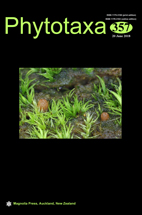Abstract
The family Hypoxidaceae is mainly distributed in the southern hemisphere of the Old World and in the North America (Sanchez-Ken 2010), with about 200 species belonging to 11 genera (Sanchez-Ken 2010, Liu et al. 2012, Snijman & Kocyan 2013, Odyuo et al. 2016). The genus Curculigo Gaertner (1788: 63) includes 17 species and 4 varieties (Govaerts 2016). It is characterized by its pseudopetiolate leaves, subterranean beaked ovaries, indehiscent fruits and strophiolate seeds (Zimudzi 1994). The first detailed taxonomic treatment of Indian Curculigo was published by Baker (1878), who recorded 7 species and 3 varieties from British India. Hooker (1892) recognized five species from British India and grouped them into two sections, namely C. sect. Curculigo and C. sect. Molineria Colla (1826: 331). Karthikeyan et al. (1989: 82) listed five species of Curculigo from India. However, Curculigo maharashtrensis Almeida & Yadav (2009: 401) and C. savantwadiensis Almeida & Yadav (2009: 402) have been recently described from Western Ghats of India. Hence, the total number of Indian species of Curculigo is now eight.

